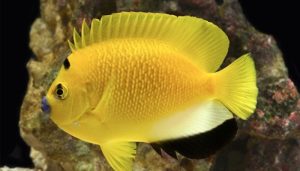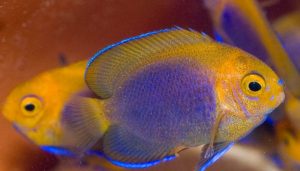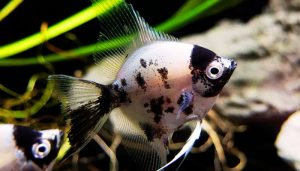Why Is My Comet Gold Fish Tail Bleeding? If you’ve noticed your beloved Comet goldfish with a bleeding tail, it’s both alarming and heartbreaking. As a dedicated aquarist, seeing your fish in distress can leave you feeling helpless and searching for answers.
Bleeding tails in Comet goldfish often signal underlying issues, ranging from minor injuries to more severe health concerns like infections or poor water quality.
But don’t worry—you’re not alone in this. Many goldfish owners face similar challenges, and the good news is, with the right knowledge, this issue can be resolved.
In this guide, we’ll dive deep into the possible reasons behind your goldfish’s bleeding tail and provide step-by-step solutions to help you restore its health.
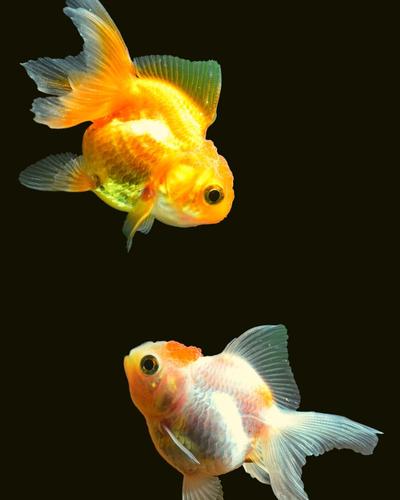
Whether it’s a result of aggressive tank mates, fin rot, or environmental factors, understanding the cause is key to treatment.
By the end, you’ll feel equipped to protect your Comet goldfish and ensure its long-term well-being.
Keep reading to uncover the hidden culprits behind this worrisome condition and learn how to take immediate action to help your aquatic friend thrive!
Table of Contents
ToggleDo Goldfish Have Blood?
Yes. Goldfish have blood just like other fish do. Their blood is composed of hemoglobin-containing cells that circulate oxygen and carbon dioxide around their bodies, similar to humans.
Additionally, they have a two-chambered heart that pumps the blood throughout their bodies, much like ours, and several other organs that help facilitate this pumping action, such as gills and a swim bladder.
Why My Comet Gold Fish Tail Bleeding?
Why is my goldfish tail bleeding? Goldfish bleeding from their fins is a serious indication of trouble in the tank.
High levels of ammonia and nitrites can cause red streaks or spots to form on the tail, signifying broken, bloody patches commonly known as blood hemorrhaging.
Investigate any changes to water conditions immediately for optimal health and happiness!
5 Reasons Why Is My Goldfish Tail Bleeding
Why does my goldfish have red streaks on its tail? Here are the most common causes of goldfish tail bleeding and how to address each one:
1. High Ammonia Concentration: (Ammonia Poisoning)
Goldfish can be particularly sensitive to high ammonia levels as it builds up in the water over time.
Ammonia poisoning causes the water to become more acidic, which leads to fin erosion and can even cause blood hemorrhaging.
The best way to combat this is by performing regular water changes and monitoring the nitrates and ammonia levels in the tank.
2. Goldfish Tail Rot Infection: (Fin Rot)
Fin rot is an infectious condition caused by bacteria or fungi that breaks down goldfish’s tail and fin tissue.
It is most common in tanks with inadequate filtration, high levels of nitrates, and additional waste build-up.
To treat fin rot, it is first essential to identify the underlying cause of the infection, such as dirty water or bullying from other fish in the small size tank. Once identified, address the cause and then treat with appropriate antibacterial or antifungal medications.
3. Poor Water Quality: (Dirty Tank Syndrome)
A dirty tank can cause health issues for your goldfish, such as fin and tail rot or hemorrhaging.
It is important to keep the tank clean, with regular water changes and adequate filtration. Additionally, ensure the tank is not overcrowded to decrease the chances of illness or injury.
4. Mixing Incompatible Fish Species: (Aggression)
Mixing different species of fish can cause aggression in the aquarium. If tankmates are bullying your goldfish, it can hurt or injure them, leading to tail-fin bleeding.
To avoid this, research the fish you plan to keep in the tank and only house compatible species together.
5. Goldfish Caught a Bacterial Infection: (Bacterial Diseases)
Bacterial diseases are common in fish and can particularly affect goldfish due to their slow and sluggish nature.
Infections can cause red streaks in goldfish tail, signifying broken blood vessels, commonly known as blood hemorrhaging.
If you suspect your fish has an infection, it is important to separate them from the larger tank and treat them immediately with an appropriate antibacterial medication and aquarium salt.
Causes of Fin Rot:
Fin Rot, also known as tail or fin erosion, is a bacterial infection caused by various gram-negative and gram-positive bacteria. It results in the progressive deterioration of the goldfish bloody fins and tail of fish due to an extensive tissue breakdown.
The most common causes are poor water conditions (too much ammonia, nitrite levels, and/or nitrates), overcrowded aquarium conditions, physical injuries caused by other fish or sharp objects in the tank, improper diet or nutrition deficiencies leading to weakened immune systems, inadequate oxygenated water flow rates, parasites such as protozoa and fungus infections.
Why Are My Fish’s Fins Bleeding?
Fin rot is a common condition affecting fish, primarily caused by dirty tanks and unhealthy water quality.
Regrettably, it can also be due to negligence with care or other fishes in the tank carrying contagious diseases – as well as injuries sustained through the mishandling of fish or from bullying behavior from their peers.
The first step is to check your tank’s parameters and ensure everything is optimized for success.
Symptoms of Fin Rot in Aquarium Fish
When fins have rotted, their edges discolor and appear milky on its edges. It can often seem like such minor changes disappear without warning until a fin or a tail begins fraying in its shape. As the infection spreads, tiny fin fragments begin forming a scar on their edges. As the infection progresses, the fins become short and stubby.
Other common symptoms of fin rot include:
- Loss of color or spots appearing on the fish’s body
- Fungus-like growths on the skin
- Clamped fins (the fish holds its fins close to its body)
- Visible sores on the body
- Ulcer-like spots surrounded by raised scales
- Lethargy and loss of appetite
- Difficulty breathing.
The best way to prevent Fin Rot is to maintain a healthy aquarium environment with clean water and proper fish nutrition. Additionally, keep an eye out for any signs of fish bullying and keep compatible species in the tank.
If you suspect your goldfish has fin rot, seek medical attention from a vet as soon as possible to ensure it gets the treatment it needs.
In some cases, fin rot can be fatal if not treated immediately. However, with proper care and treatment, most goldfish fully recover and can return to their healthy, happy selves.
It is important to follow the vet’s instructions accurately and give your goldfish the time it needs to heal and recover from this health issue.
You can also treat fin rot with antibiotics and other anti-inflammatory or antifungal medications.
However, be aware that some medications can cause further harm to your fish if not used correctly, so consult a vet before attempting to treat your goldfish.
Do Goldfish Tails Heal?
Yes, goldfish tails can heal if the injury is not too severe. If the edges of your goldfish’s tail have been torn or developed a bacterial infection, antibiotics or anti-inflammatory medications can usually be treated.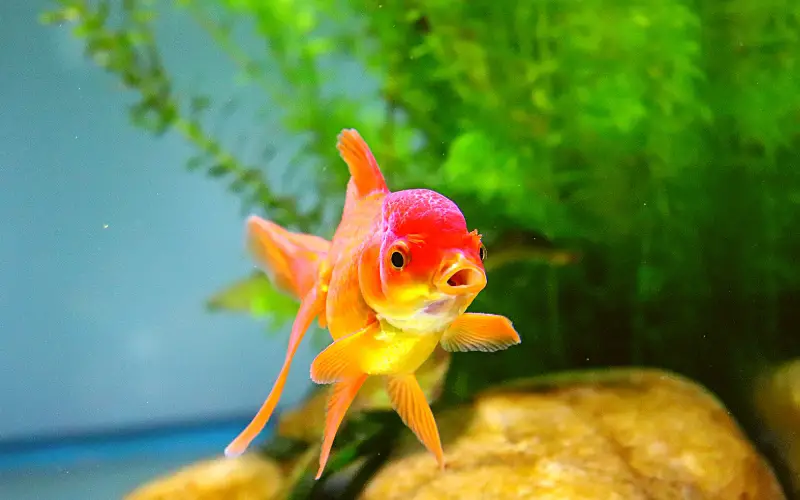
It is important to monitor the healing process and keep your goldfish in a clean environment with proper nutrition. You should also avoid overcrowding your tank and house only compatible species together.
If you notice any signs of stress or distress in your fish, it is important to seek medical attention from a vet as soon as possible. With proper care, goldfish tails can heal, and your fish can return to its healthy, happy self. hospital tank
How Do You Treat Red Tail in Goldfish?
Red Tail in goldfish, also known as tail rot, is a bacterial infection that can affect the fins and tails of fish, leading to discoloration, fin erosion, and even death if left untreated.
Your goldfish has a red tail, and you’re unsure what to do about it. A red tail in goldfish can signify many diseases or infections, all of which require different treatments.
In this video, we will show you how to treat red tails in goldfish using the most effective methods available. We’ll also teach you how to prevent this problem from happening again.
The best way to treat Red-tails in goldfish is to separate them from the tank and treat them immediately with appropriate antibacterial medication.
Make sure to consult a vet before treating your fish with any medication, as some medications can cause further harm if not used correctly.
Red Streaks on Goldfish Tail Fin Treatment
A bacterial infection usually causes red streaking on the tail fin of a goldfish.
This type of infection can be treated with antibiotics, but there are some simple steps you can take to help prevent it from happening in the first place.
The most important preventive measure you can take is to keep your goldfish tank clean.
Maintaining high water quality is key to preventing disease. This includes regular water changes, using an ammonia-reducing filter media, avoiding overcrowding your tank, and keeping up with basic aquarium maintenance such as vacuuming gravel and removing algae build-up.
If a red streak appears on your fish’s tail fin despite taking all these precautions, it may signify a bacterial infection that can be treated with antibiotics.
However, if caught early enough, it often responds well to ensure that the environment is stable and clean – harsh chemical treatments are not always necessary when treating this condition if detected soon enough!
Therefore ensuring that the water parameters (temperature, pH, etc.) remain consistent within limits known for healthy goldfish environments can provide good results in helping cure any existing red streaks on goldfish bloody fins or even avoid them altogether.
Hemorrhagic Septicemia Goldfish Treatment
Hemorrhagic septicemia is a deadly bacterial infection that can affect goldfish. Symptoms include red streaks in goldfish tail, difficulty breathing, loss of appetite, and lethargy.
This condition requires immediate medical attention from a vet to give your fish the best chance of survival. Treatment includes antibiotics, anti-inflammatory medications, and supportive care.
It is important to keep your goldfish tanks clean and remove any sick fish immediately. Avoid overcrowding, as this can weaken a fish’s immune system and make it more susceptible to disease.
Oranda tail red streaks and furunculosis Goldfish Treatment
Oranda tail red streaks and furunculosis are common bacterial infections in goldfish. Symptoms include red streaks or spots on the fins, loss of appetite, lethargy, and reddening of the gills.
To treat these infections, you should separate your fish from other fish in the tank, increase the water temperature, and use antibiotics.
Maintaining a clean tank with good filtration and frequent water changes is also important. This will help prevent these infections from occurring in the first place.
Overall, red tails in goldfish can be treated if caught early enough. While medications are often necessary for treating more advanced infections, taking the proper preventive measures can help reduce the likelihood of these illnesses occurring in the first place.
Why Is My Goldfish Tail Turning Red?
Why is my goldfish’s tail turning red? goldfish fins turning red is typically caused by parasites, such as ichthyophthirius multifiliis (commonly referred to as “ich”).
Ich appears on the fish as a white or yellowish spot that can quickly spread if not treated. Other causes of a red tail include stress or poor water conditions.
If your goldfish’s tail turns red, it’s important to take action immediately and address any underlying issues.
Check the water parameters and test for parasites, then adjust accordingly by treating the tank with medication or doing partial water changes depending on what you find.
Why Is My Goldfish Tail Broken?
The most common cause of broken goldfish tails is collision-related injuries. When your fish swims too close to the side of its tank, decorations, or other objects, it can get injured, and its tail may become damaged or split.
This can occur due to accidental fin damage when swimming around in too small a tank with insufficient room for your fish to move freely.
Make sure you keep your tank well-maintained and provide plenty of space for your fish to move around comfortably without risk of injury.
Why Is My Goldfish Bleeding from His Gills?
Various issues, including parasites, bacterial infections, water quality, and stress, can cause goldfish red gills.
If your goldfish’s gills are bleeding, it is important to investigate what could be causing the problem immediately.
Test the water parameters and look for symptoms of parasites or bacterial infections, then adjust accordingly by treating the tank with medication or doing partial water changes depending on what you find.
You should also look into potential sources of stress, such as overcrowding or poor water quality, and make sure to improve the environment in the tank.
Providing a nutritious diet with plenty of vitamins and minerals is also important, as this can help your fish build a strong immune system to fight off illness better.
While there are many potential causes of red gills in goldfish, taking the proper steps to diagnose and treat the issue as quickly as possible will help ensure your fish’s health and well-being.
Why Is My Goldfish Turning Red?
Your goldfish’s sudden change in color has alerted you to a serious underlying health issue – possibly ammonia burns or the dreaded red pests.
An infection of cyprinid bacteria causes this latter condition, often stemming from tank water with dangerously ammonia levels. Make sure to act quickly and care for your sweet fishy!
What to Do If Your Goldfish Bleeding from Anus?
If your goldfish is bleeding from its anus, you should check the water quality first. Poor water quality can cause various issues in fish, including excessive fin damage, parasites, and bacterial infections.
Ensure all necessary filtration, aeration, and temperature levels are within acceptable limits for fancy goldfish care. If the problem persists, it’s important to take your fish to an aquarium specialist for further diagnosis, as some underlying issues could be causing the bleeding.
The aquarium specialist will also be able to advise on how best to treat any infection or parasites that may be present and likely advise on dietary changes if needed.
Do you have to Nitrogen Cycle a fish tank?
Cycling your aquarium is key to ensuring a healthy and balanced aquatic environment. This allows beneficial bacteria to flourish, organically removing harmful ammonia as they grow – so you can enjoy the beauty of nature in every bubble!
Conclusion
After much deliberation, we’ve concluded that a bacterial infection is the most likely cause of your comet goldfish’s tail bleeding. However, there are many potential causes of this condition, so it’s important to consult with a local pet store aquatic veterinarian or fish expert to get a definitive diagnosis. If you take proper care of your fish and provide them with a clean and healthy environment, they should be able to live long and happy lives. Thanks for reading, and good luck!
You might also like
- How Many Goldfish in a 10 Gallon Tank (Exact Numbers Solved)
- The Ultimate Guide to Choosing Tank Mates for Goldfish (List)
- Do Goldfish Eat Other Fish? – Here’s How to (Stop Them!)
- Can Angelfish Live with Goldfish? – Here’s Why Not & (FAQs)
- When Is Goldfish Breeding Season? (Surprising Facts & FAQ)
- How Old Do Goldfish Have to Be to Breed? (Secrets Revealed)
- Gold Comet Fish 101: The Only Guide You’ll Ever Need!


